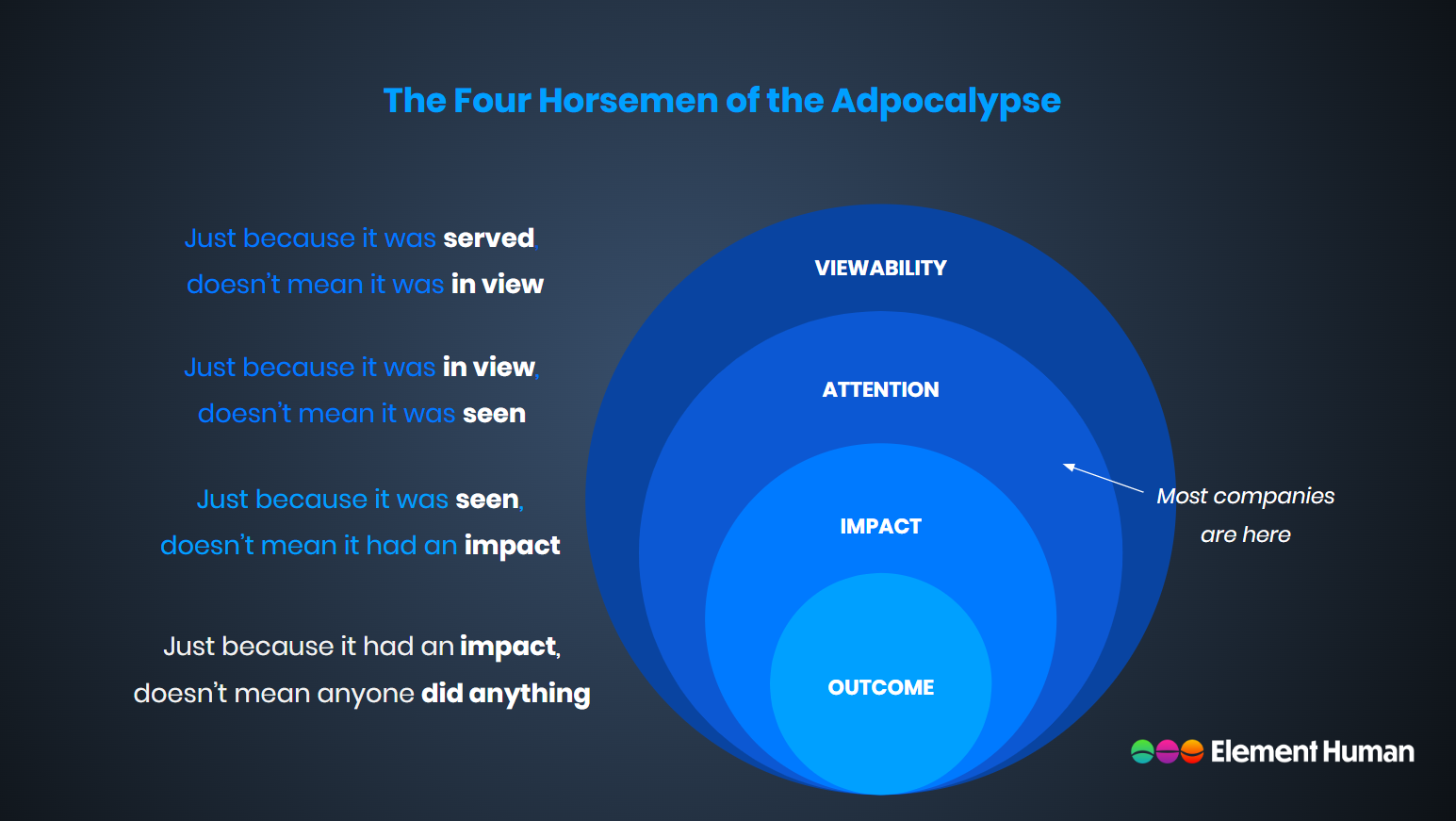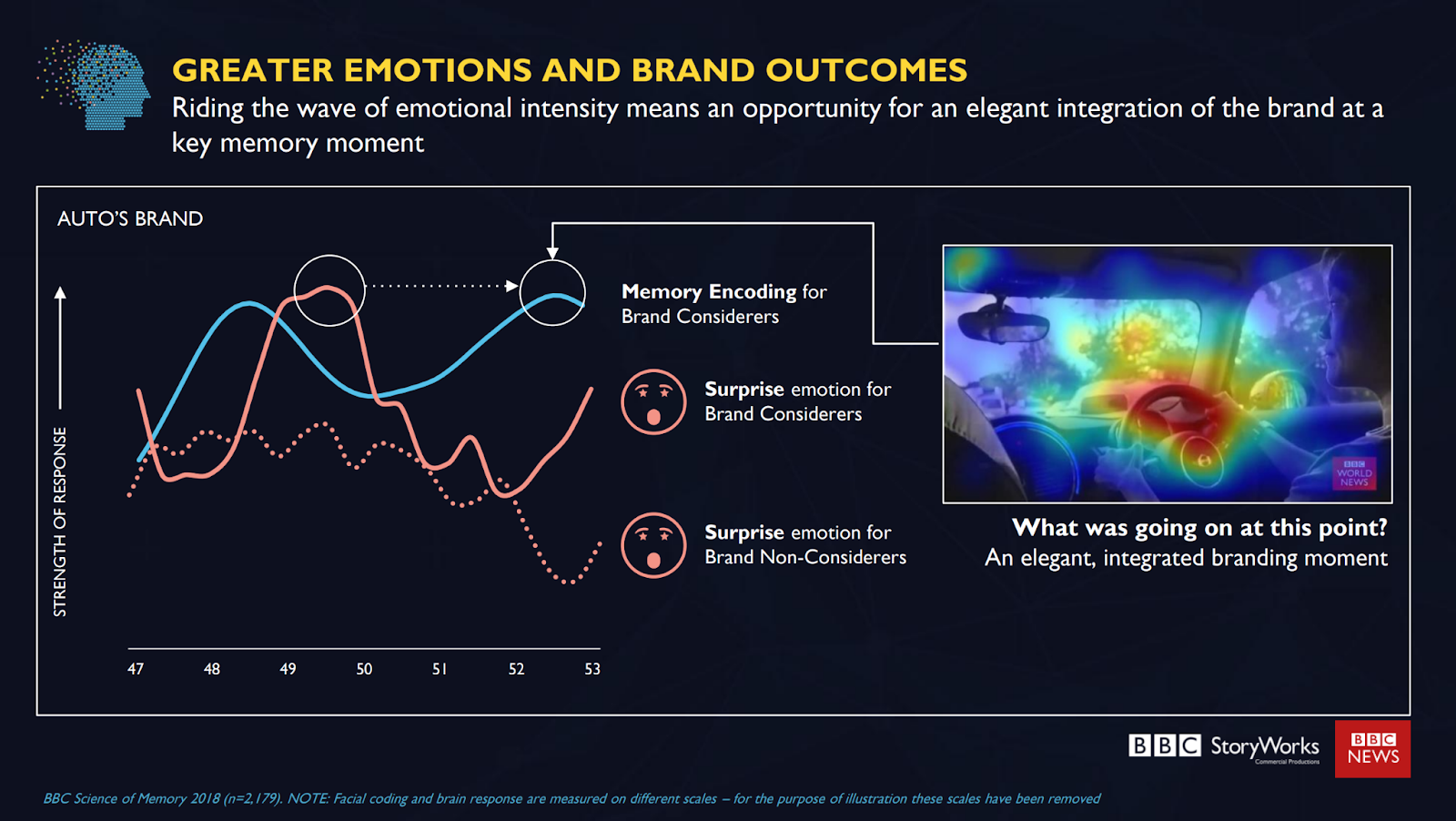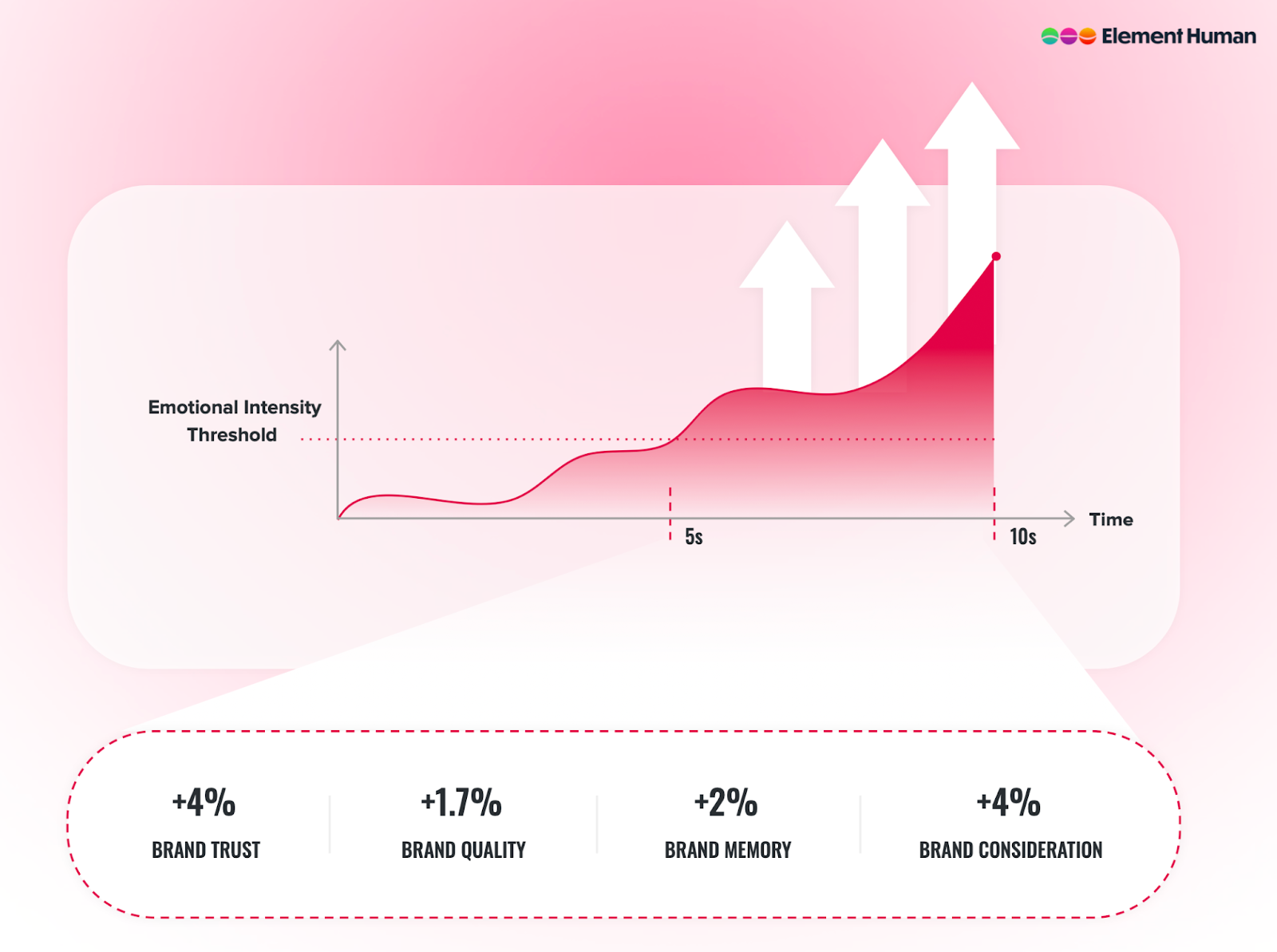Whilst the Viewability crisis seemingly came out of nowhere, the issue of ads being paid for but not ‘in view’ was always there: it’s just technology that changed our ability to see the problem (and I’ll graciously ignore the fact that technology also caused the problem).
Similarly with Attention: we had only just righted the boat on Viewability and we were all thrown back in the drink due to another technological advance: using eye-tracking we could now see that just because we could determine which ads were ‘in view’, that still didn’t mean that audiences were ‘looking’ at them.

The Four Horsemen of the Adpocalypse. Element Human, 2024
However again, the problem was always there; it’s just that as advances in technology shine a light on our problem areas, so too do client expectations of accountability rise in turn (along with our collective blood pressure)
The problem is that technology isn’t done with us. It’s still shining lights in uncomfortable areas, and just because we can now establish that audiences paid ‘Attention’ to advertising, again doesn’t mean that we can close the book on measurement challenges. You can prove ‘Attention’, but can you prove that those who watched actually felt any kind of impact?
Measuring this boils down to emotional engagement - which has been around in lab settings and one-off projects for a while, but only recently has ridden the technological wave to become truly scalable.
But does emotional engagement drive brand goals? Here’s how it works:
Advertising relies on ‘Memory’ more than it cares to admit - the vast majority of those who see an ad, don’t buy immediately; so advertising must work to create memory structures in the mind of the consumer, to increase the likelihood that they will be remembered in a ‘buying moment’. (How Brands Grow. Byron Sharp, 2010). Neuroscience tells us that, from an evolutionary perspective, when a human experiences a moment of intense emotion, our brain starts to encode what it is experiencing into our long term memory.
If you’re 40+, you’ll almost certainly remember exactly where you were when the Twin Towers fell in 2001; a moment of intense emotion that created a long term memory. In many ways, advertising’s job is to use the same neural pathway; to engage an audience, elicit an emotional reaction out of them, and thereby be remembered.
Element Human teamed up with BBC and Neuro-Insight to explore this in 2018 in ‘The Science of Memory’. Bringing together Element Human’s emotion tracking and Neuro-Insight’s long term memory encoding gave a new view on how emotion and memory interact in advertising.

The Science of Memory, 2018 (BBC, Element Human, Neuro-Insight)
Moments of emotional intensity in advertising were followed by moments of long term memory encoding. Those viewers that experienced those emotions more intensely were more likely to commit the brand to their long term memory. And the more emotional peaks that were observed, the higher the rate of long term memory. It turned out that not only did content need to connect emotionally with its audience, but the traditional style of slowly building towards an emotional crescendo was actually not the most effective. Create emotional impact immediately, and keep doing it. It helps ‘warm up the emotional engine’ and means that the audience is more likely to keep watching.
However in 2024 we found that the story was slightly different than we had previously thought. With the BBC, we had determined that it was all about emotional ‘peaks’ - the more peaks of emotion you can drive, the better chance that your brand will be remembered.

Emotional Intelligence (Element Human & Influencer, 2024)
Our 2024 study ‘Emotional Intelligence’ with Influencer found that it was time, rather than peaks that was driving brand impact. It doesn’t matter how ‘many’ peaks you get, it’s how long the audience spends at a high level of emotional intensity. The more seconds they spend,, the more the brand is likely to be remembered, trusted, and considered in a buying moment.
So this is the arena in which we now find ourselves - battling to prove the power of impact through the lens of emotion; and showing the pathway from Emotion to Memory to Purchase. This is the fundamental skeleton of Element Human’s research framework. And the rapid rise in creator marketing has accelerated the need for this type of measurement. As carefully sculpted TV commercials have given way to the far less controllable environment of influencers and their audiences, the need to harness the emotional power being generated — and direct it toward brand outcomes is more important than ever.
Want to go deeper?
Watch Hamish have an "emotional breakdown" on our podcast!